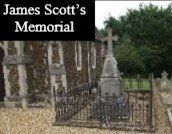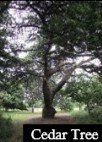King’s Walk Cemetery
Downham Market
Burial Acts were passed in 1852/53 enabling local authorities to administer their own cemeteries, and parish vestries elected Burial Boards to manage them.
On 19 July 1856, the Lynn Advertiser reported the opening of Downham Market's first cemetery. The two acre site had formerly been a plantation, and a considerable number of trees were left standing.
Two thirds of the space available for burials was reserved for the Church of England and the remainder for Non-Conformists.
The cost of the new King's Walk Cemetery was met by a loan of £1,400, to be repaid over 20 years.
The Churchyard around St. Edmund’s Church will, of course, pre-date this Cemetery. Records indicate that King’s Walk Cemetery ceased to provide new burial plots in about 1900. Many of the memorial stones in the Churchyard (immediately surrounding the Church) were moved when "The Wall" was built. They can be found around the Church.
The naming of this Cemetery is presumed to come from the time when King Charles 1 apparently stayed in the Swan Hotel and took strolls along the track towards the rear of the hotel, leading up to the site of the Cemetery.
The main gates of the King’s Walk Cemetery are regularly maintained/repaired/rejuvenated. There is a fear of what damage will happen to the pillars if the gates are removed.
The two Mortuary Chapels, in the Early Gothic style, were designed by William Lawrie and built by William Goose, and are both currently used as storage facilities for different organisations. The North Chapel, with the larger bell, was originally used as the Anglican Mortuary and the other, with the smaller bell, was the Non- Conformist one. A new bell, cast by Taylor's of Loughborough, was installed in the Non-Conformist chapel in July 1906, at a cost of £30. It was judged to have a much better tone than the old one, known locally as "the sheepbell" or "the tinkler". Along with the former Cemetery Keeper’s or Sexton’s House, the three properties make what is thought to be a unique attractive trio of carrstone buildings.
Alongside the southern chapel one of the memorials has a very special link to Downham Market, being that to James Scott, the gentleman who provided Downham’s well known Town Clock.
Walking down the centre pathway of the Cemetery we can again see that there is a program of clearing throughout approximately a three-year cycle. This is a way of keeping the site lines clear as well as allowing wildlife freedom to exist and giving family history researchers access to the memorials.
The fine cedar tree at the end of the walk looks out over the Howdale. An open play space owned and maintained by the Borough Council.
The Howdale and other areas to the east of our position are very sandy and some of them are pits where much of the local carrstone was quarried.
The walls surrounding the Cemeteries, as many walls in Downham Market, are built of carrstone. Whilst this stone is very attractive it requires regular maintenance as it is a form of sandstone. The walls around the Cemeteries are therefore checked and repaired on a very regular basis.
In the Cemetery side walls (north and south) can be seen numbers carved on stone shields – these are the markers for the rows of graves.






